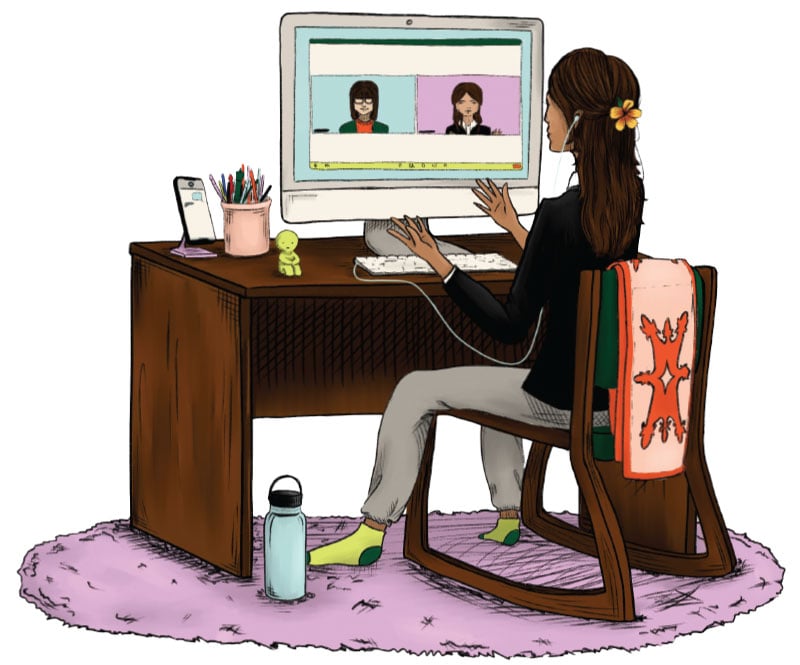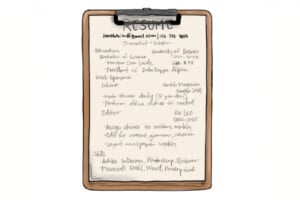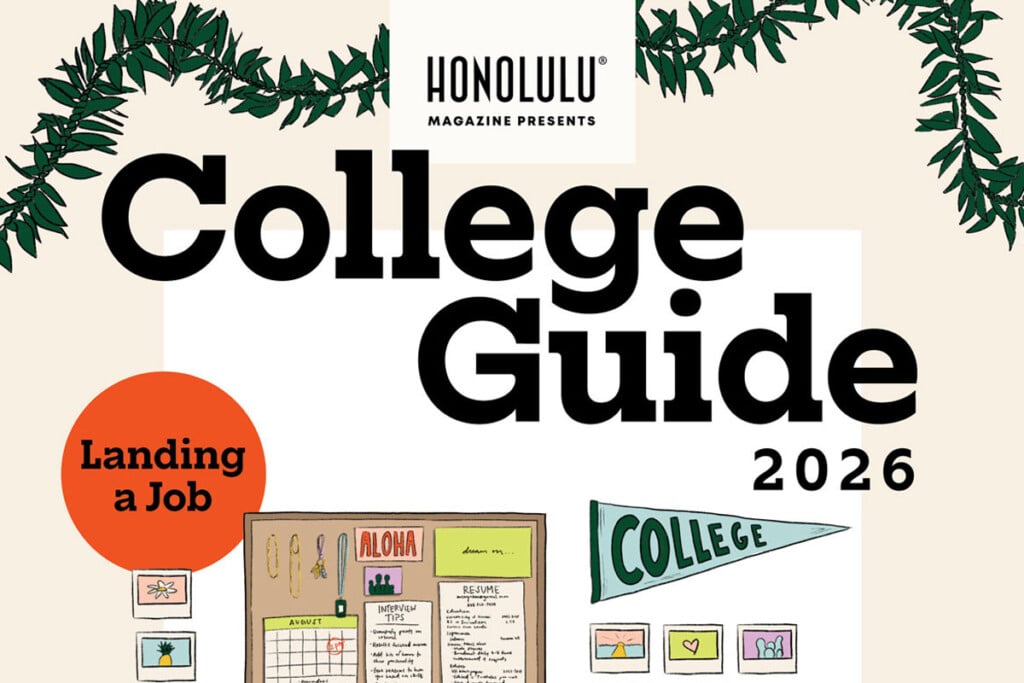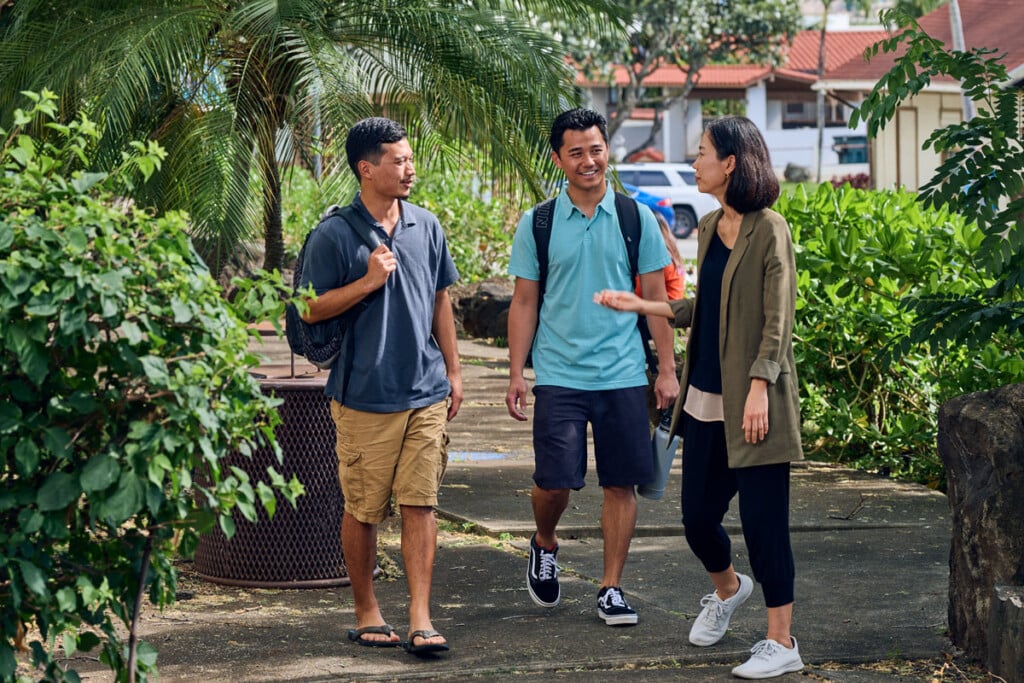2026 Hawai‘i College Guide: Landing a Job
Colleges are designing new AI tools, internship opportunities and courses to better equip students for post-graduation careers.
R
Rising unemployment rates. Widescale layoffs. A growing dependence on generative AI. Recent college graduates are facing one of the toughest job markets in years. The Federal Reserve Bank of New York reported in March that unemployment among people 22 to 27 reached 5.8%, almost 2% higher than the overall unemployment rate. The last time this group faced such tough work prospects, excluding the height of the pandemic, was 2013.
Hiring has also slowed significantly—and seemingly abruptly. Last fall, employers planned to hire 7.3% more graduates from the class of 2025 than they did from the class of 2024, according to the National Association of Colleges and Employers. That expectation dropped to 0.6% by spring, a period of economic uncertainty marked by talks of tariffs, government and corporate layoffs, and inflationary pressures.
This trend is not going unnoticed by college administrators, who see firsthand how the slowdown on hiring is impacting their students and recent graduates. “For a lot of students, it’s creating a lot of anxiety: having to change career plans, even relocate,” says Ryan Tin Loy, senior career development adviser at Hawai‘i Pacific University. “Things are very stressful for our current graduates.”
But as economic threats loom and the threat of unemployment grows, colleges are creating new ways to support their students. We spoke with administrators at colleges across the country that are popular among Hawai‘i high school graduates to see what they’re doing to prepare their students for a challenging job market.
“I cannot control the economy, so what we’re going to do is we’re going to control what we can control: increasing our efforts to provide as many different postgraduation opportunities and internship opportunities for students,” says Jennifer Kim, associate vice president of career and professional development at Chapman University in Southern California.
Instead of Fearing AI, Embrace It
The use of generative artificial intelligence in the workplace has been a hot topic since the launch of OpenAI’s ChatGPT in 2022, with some experts claiming the technology could be responsible for the recent decline in entry-level positions available to new college graduates in such fields as computer science, engineering and finance. But for some colleges, AI isn’t necessarily a threat—it’s a tool.
“I think students almost have to be using those tools,” says Heather Doering, associate director of business career programs at Creighton University in Omaha, Nebraska. “At least on the business side, we have employers saying on their job descriptions they want students to have AI literacy.”
The past two years have seen a 400% increase in the use of the term “AI” in job descriptions, according to data from Handshake, a job search engine widely used by Gen Z. Many colleges are addressing this change through workshops or courses that teach students how to ethically use AI. Others are taking a more direct approach, launching their own AI tools for students to use as they begin to enter the job market.
At Chapman, students can access the Chapman Career AI, a comprehensive career platform launched in 2023 that uses artificial intelligence to assist students with virtual mock interviews, résumé and cover letter drafting, and LinkedIn profile development.
Oregon State University pays for students and recent graduates to access similar virtual tools, including the AI-enabled résumé reviewer VMock and Standout, an interview preparation platform that gives students instant feedback on their practice recordings. In April, the college also developed a custom AI chat, the OSU AI Career Assistant. Peer career assistants can use the technology to offer students additional feedback, practice guides and sample interview questions during advising sessions.
This year—anticipating student concerns over federal hiring freezes and workforce reductions—career education staff at OSU used AI to identify available county and city jobs that are comparable to federal ones. “Helping students figure out how to think outside the box, how to see what’s also available, is something we really pride ourselves on,” says Elizabeth Simmons, OSU’s senior director of career development.
Likewise, the University of Hawai‘i at Mānoa utilizes AI both in its curriculum and in its efforts to help students land internships and jobs, although Career Center director Wendy Sora says the university continues to prioritize personalized, human-centered career counseling. “We want students to be able to leverage AI,” she says. “We don’t see it as a solution or answer for all career-related matters.”
Computers Can’t Compete
Some colleges are adapting their curriculums to better prepare students for the changing demands of employers. Chaminade University revised its general education program in 2020, which administrator Jennifer Creech says could give students a leg up in today’s job market—one that increasingly favors applicants with demonstrable soft skills.
In the face of a world increasingly run by computers and AI, these skills give students a way to stand out.
“Our general education follows a scaffolding approach that intentionally weaves in adaptability, communication skills, critical thinking,” she says. “It’s also a holistic design that ensures that every graduate that leaves Chaminade will have both an academic knowledge and the soft skills that employers value the most today.”
The college also recently formed advisory boards composed of a broad spectrum of industry and community leaders who provide ongoing feedback on the curriculum’s alignment with workforce needs and emerging trends. But Chaminade is not the only college placing an emphasis on soft skills.
At HPU, first-year students take a course on adapting to college and strengthening their communication, teamwork, leadership and professionalism. Students rate themselves on their skills and reflect on how they plan to develop them during college.
“These are skills that allow students to take on a variety of different careers,” says Joseph Barnett, director of HPU’s Center for Academic Success. “As the workforce changes with things like AI and changing job markets, our students are able to adapt.”
Other colleges are taking a more direct, career-focused approach. Last summer, OSU launched a new core education curriculum that includes two required courses centered around career readiness and development. The program, called Beyond OSU, teaches students how to connect their education to suitable careers and provides them with internships, undergraduate research and service opportunities.

It’s About Who You Know
Networking is a crucial component of landing a job, especially for recent college graduates. “Networking is the number one thing I talk about with our students, because ultimately, that’s going to be what cuts through and gets you an interview,” Doering says.
Yet according to Sarah Phillips, an administrator and former professor at Pacific University in Oregon, many students come to college without potential employment connections.
“Before I taught at Pacific, I taught at Yale—those students didn’t need help, right?” Phillips says. “They came from families that were going to take care of them just fine. Our students are different. They’re going to be just as successful, but they need some scaffolding.”
With about 20% of its student body coming from Hawai‘i, the school has a Hawai‘i Outreach & Programming office, where current families, faculty and alumni with Hawai‘i ties can connect with students and offer them one-on-one support and guidance. The office also houses Nā Haumāna O Hawai‘i, a student-run club that hosts an annual lū‘au and hōi‘ke.
Phillips says the office creates opportunities for alumni from Hawai‘i to keep in touch with the college, which can prove helpful when graduates are looking for work back home. Oftentimes, alumni who’ve successfully landed jobs call Janalei Chun, or “Auntie Jana,” the office’s director, to share other opportunities and connections that students can take advantage of. “You have to network people, have to know somebody and call somebody, and having a huge network of alumni—of tens and thousands of alumni—is incredibly helpful for that,” she says. “I would say that is especially true in the Islands, where it’s small and folks are really interconnected.”
Most colleges also host regular career fairs, where recruiters meet with students on campus. OSU alone organizes more than 30 career fairs each year, along with informational and mock interview sessions with employers. At Chapman, students meet with alumni and potential employers in more intimate settings through its Career Networking Nights.
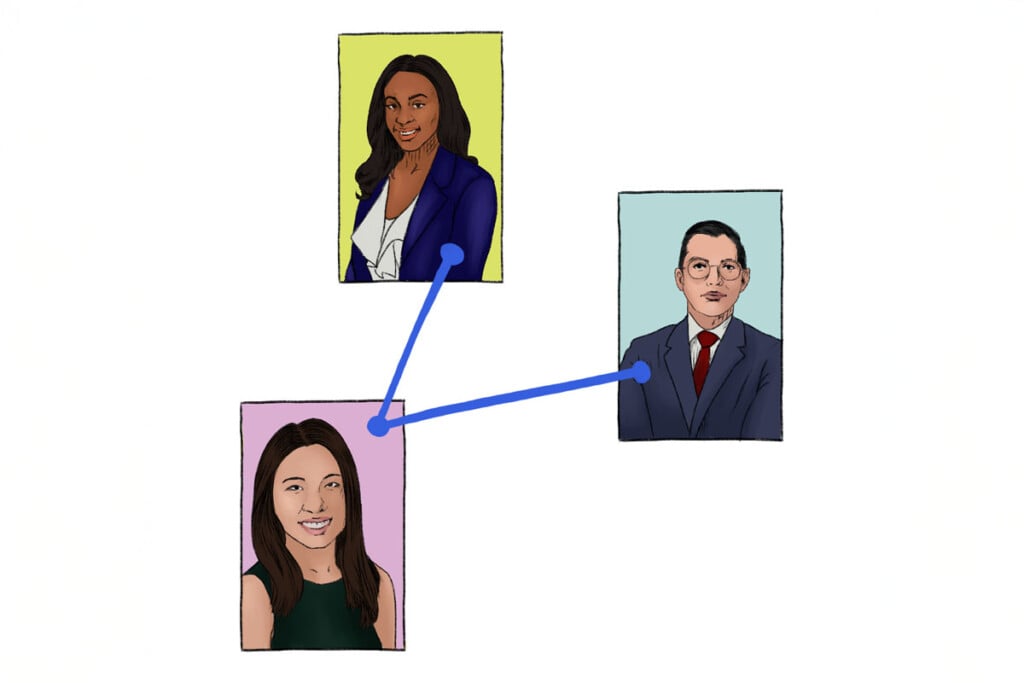
Getting a Foot in the Door
Another must: landing an internship. College administrators say students should aim to have relevant job experience in their desired fields before they graduate. In 2024, LinkedIn reported that those who participated in internships during college were 22.9% more likely than their nonintern counterparts to obtain full-time positions within six months of graduation.
Now more than ever, with entry-level positions becoming increasingly difficult to secure, colleges are encouraging students to pursue internships year-round.
At UH Mānoa, several academic programs—such as Human Development and Family Studies, and Fashion Design and Merchandising—now require students to participate in internships and capstone projects. “We want students to recognize their whole self, all the things that they’re doing to really build those career competencies, because it doesn’t just happen in the classroom,” Sora says. “It’s also what they do outside.”
Other colleges are bolstering on-campus job opportunities to build students’ skills. “We’re really excited to make sure that if our students do not have the financial means or the time to obtain external internships, we’re going to maximize their on-campus work experience,” Kim says. “They can leverage their on-campus employment to parlay that into other internships and their postgraduation employment opportunity.”
Despite the challenges, college administrators say they’re confident they can still forge paths for student success.
“I believe students come to college with hopes and dreams, and I just feel like part of our purpose being here is really to support students in actualizing the things that they work so hard for,” Sora says. “Our students of today are leaders of tomorrow.”
Annabelle Ink was HONOLULU Magazine’s Society of Professional Journalists intern for the summer of 2025. She majors in English at Pomona College.
